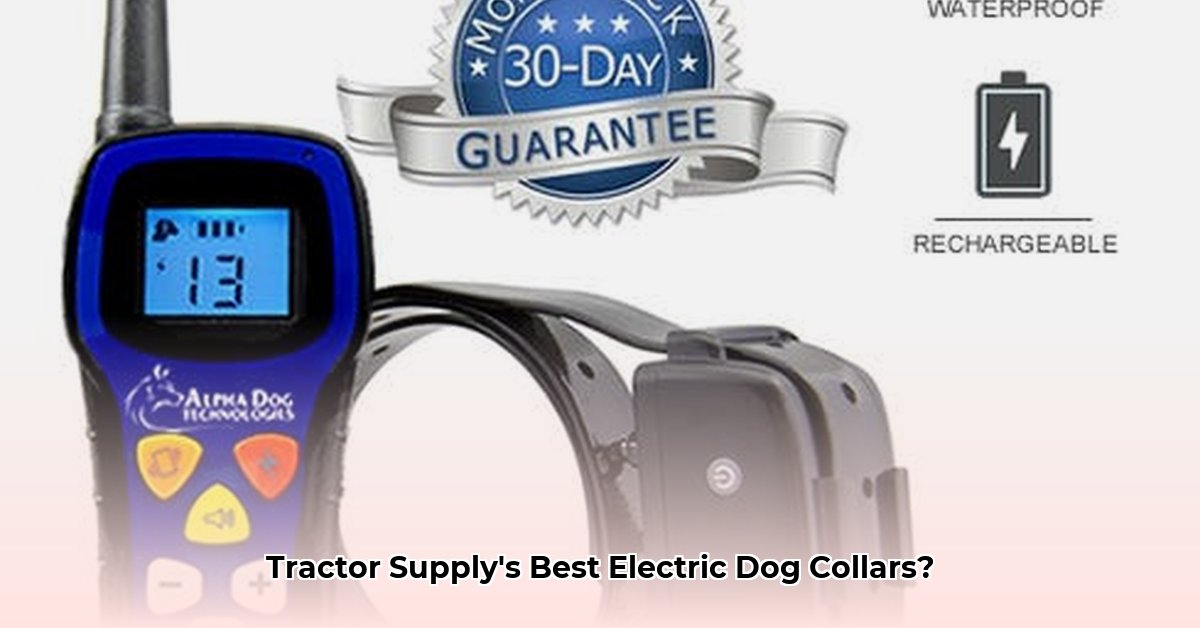
Understanding Electric Dog Collars: More Than Just a Shock
Choosing the right training tool for your dog can be daunting, especially when considering electric dog collars, often called e-collars. These devices use mild electrical impulses to correct unwanted behaviors; however, it's crucial to dispel the misconception that they solely inflict punishment. Instead, a well-trained handler uses them to provide immediate, gentle feedback, guiding the dog toward improved behavior. The key is responsible and humane use. Dr. Emily Carter, Certified Professional Dog Trainer at the Institute for Canine Behavior, emphasizes, "The impulse should feel like a slight tingle, not a painful shock. The intensity is adjustable, allowing for a tailored approach."
Many modern e-collars feature vibration and tone-only options, providing additional training methods beyond static stimulation. The goal is clear communication, not intimidation. Effective training incorporates positive reinforcement alongside the e-collar's corrective signal. The effectiveness hinges on proper technique and understanding, not solely on the device itself. How can we ensure e-collars are used humanely and effectively? What are the ethical considerations? For more information on e-collars from Tractor Supply, check out this helpful resource: Tractor Supply e-collars.
Navigating the Tractor Supply Selection: Finding the Right Fit
Tractor Supply offers various electric dog collars; selecting the right one depends on several factors. First, consider the collar type: remote trainers allow distant correction, bark collars target excessive barking, and static shock collars (often with vibration and tone options) provide a range of corrective signals. Secondly, scrutinize the stimulation levels, ensuring adjustable settings for gradual introduction and personalized training. Always start with the lowest setting and increase only as needed. Never use a setting that elicits fear or distress.
Thirdly, factor in your dog's size and breed to ensure a comfortable and effective fit. Tractor Supply's sizing charts are valuable, but consider visiting the store with your dog for a proper fitting. Next, assess the added features, such as waterproof designs, long battery life, and user-friendly charging systems. Finally, consider battery life and charging method to avoid mid-training disruptions. What features best suit your dog's needs and training style? How can we maximize our e-collar investment?
Weighing the Pros and Cons: Making an Informed Decision
Before purchasing, understanding the pros and cons of electric dog collars is crucial.
| Pros | Cons |
|---|---|
| Effective for addressing behavioral issues | Requires responsible ownership and correct usage. |
| Offers remote control and correction | Potential for misuse, leading to fear and anxiety. |
| Versatile, usable across many breeds | Ethical concerns exist among some pet owners. |
| Can be a valuable training tool | May not be suitable for all dogs, particularly sensitive ones. |
Safe and Humane E-Collar Use: A Training Partner, Not a Punishment Tool
Remember, an e-collar is a training tool, requiring patience, consistency, and understanding. Never use it as punishment. Effective use necessitates a positive reinforcement training program.
Steps to Humane E-Collar Introduction:
Professional Consultation: Consult a certified professional dog trainer for tailored guidance.
Positive Reinforcement: Combine the e-collar with rewards for desired behaviors.
Gradual Introduction: Allow your dog to acclimate to the collar's presence before introducing any stimulation.
Constant Monitoring: Regularly check for proper fit and signs of discomfort.
Start Low and Slow: Begin with the lowest stimulation level, increasing only if needed.
Choosing the right e-collar from Tractor Supply requires considering your dog's temperament, training goals, and ethical considerations. Prioritize your dog's safety and well-being. Responsible pet ownership demands correct and ethical tool usage. A well-trained dog is a happy dog. What additional resources can assist in responsible e-collar training?